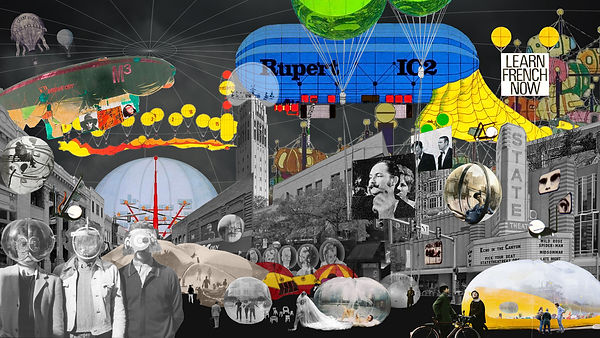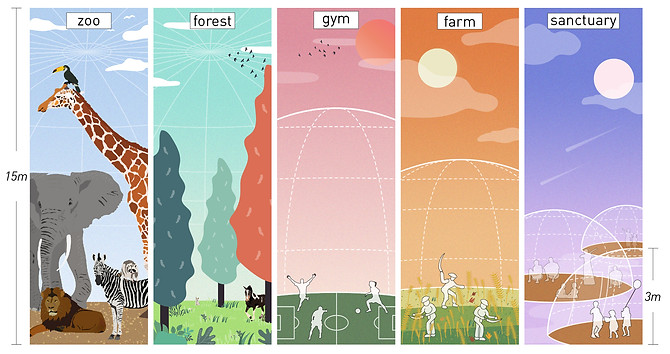Jiang
Portfolio

Urban Inflation
Project Location: Ann Arbor, USA
Status: Summer 2020, Longo Competition
Team members: Yinan Fang, Yuxin Lin, Chunyang Xu
Instructor: Sharon Haar, Glenn Wilcox, Anca Trandafiescu, Perry Kulper, Romil Sheth
Role: defined min, and max inflation modes; involved in social distance drawings, inflation plans, bubble taxonomy, bubble axonometric drawings, rendering of campus scene, digital modeling
Selected for the Symposium component of 2021 Agora Journal, Longo Competition 2nd Prize
Mapping UMich Central Campus Programs

Everyday Activity Score
Our group divided UMich central campus into three districts - commercial, education, and public in the one-week time span. Based on the analysis of the timeline and activities of different groups, we developed two urban inflation modes on weekdays and weekends.

Weekday Inflation Mode

When it comes to weekdays, commercial area and public area will be reduced to minimum whilst education will expand to its maximal status.
Weekend Inflation Mode

When it comes to weekends, education area will be reduced to minimum whilst commercial area and public area will expand to their maximal status.
E. Liberty Street x S. State Street | Commercial Area

Central Campus University of Michigan | Education Area

S. University Avenue x Church Street | Public Area

Bubble Taxonomy

Mega bubbles revitalizes the gathering activities in a safer way. Mid ones hold middle-sized activities. Mini bubbles are used as temporary furniture within the mid and mega bubbles.
Lifecycle of Bubbles

Considering the future use of bubbles, we grant them six post-pandemic new functions so the bubbles can be reused and recycled everywhere due to their light and portable properties.